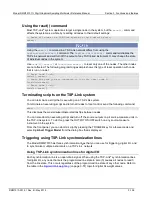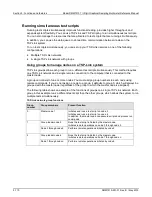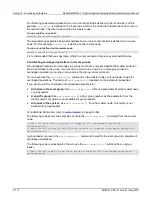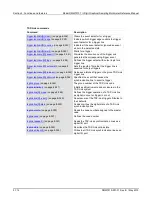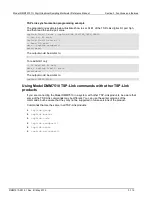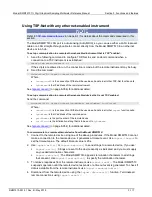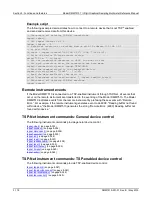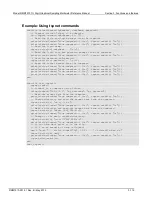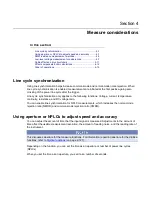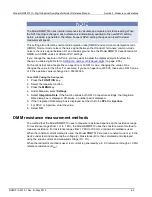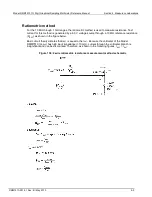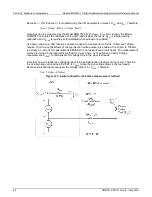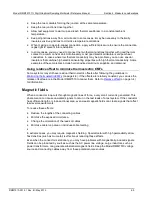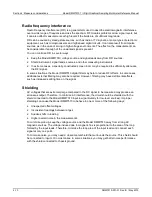
In this section:
Line cycle synchronization ....................................................... 4-1
Using aperture or NPLCs to adjust speed and accuracy .......... 4-1
DMM resistance measurement methods .................................. 4-3
Low-level voltage measurement considerations ....................... 4-7
Cable effects on dry-circuit ohms ........................................... 4-11
Offset-compensated ohm calculations ................................... 4-14
Order of operations ................................................................ 4-15
Line cycle synchronization
Using line synchronization helps increase common-mode and normal-mode noise rejection. When
line cycle synchronization is enabled, measurements are initiated at the first positive-going zero
crossing of the power line cycle after the trigger.
Line cycle synchronization only applies to the following functions: Voltage, current, temperature,
continuity, resistance, and DC voltage ratio.
You can enable line synchronization for NPLC measurements, which increases the normal-mode
rejection ratio (NMRR) and common-mode rejection ratio (CMRR).
Using aperture or NPLCs to adjust speed and accuracy
You can adjust the amount of time that the input signal is measured. Adjustments to the amount of
time affect the usable measurement resolution, the amount of reading noise, and the reading rate of
the instrument.
This discusses aperture for the measure functions. For information regarding aperture for the digitize
functions, refer to
(on page 2-127).
Depending on the function, you can set the time as an aperture or number of power line cycles
(NPLCs).
When you set the time as an aperture, you set it as a number of seconds.
Section 4
Measure considerations



